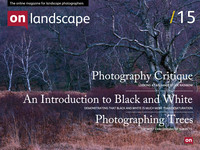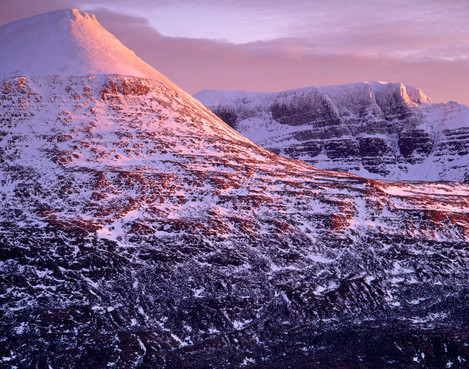Malcolm MacGregor responds to Beyond Beauty

Malcolm MacGregor
Based in Scotland, Malcolm MacGregor has worked as a landscape and documentary photographer, travelling the world for 20 years. His most recent work is a book about the Namib Desert entitled 'The Namib'.
But does wilderness really exist or is it just in the mind of the photographer, who goes all starry eyed at the mention of the word? Is it an illusion that plays tricks on outdoors people who need such places for their own sanity? Julian asked the question ‘is there something profound in the human psyche that makes the experience of wilderness so alluring?’ This article attempts to answer these questions with reference to wilderness and where the landscape photographer might fit in.
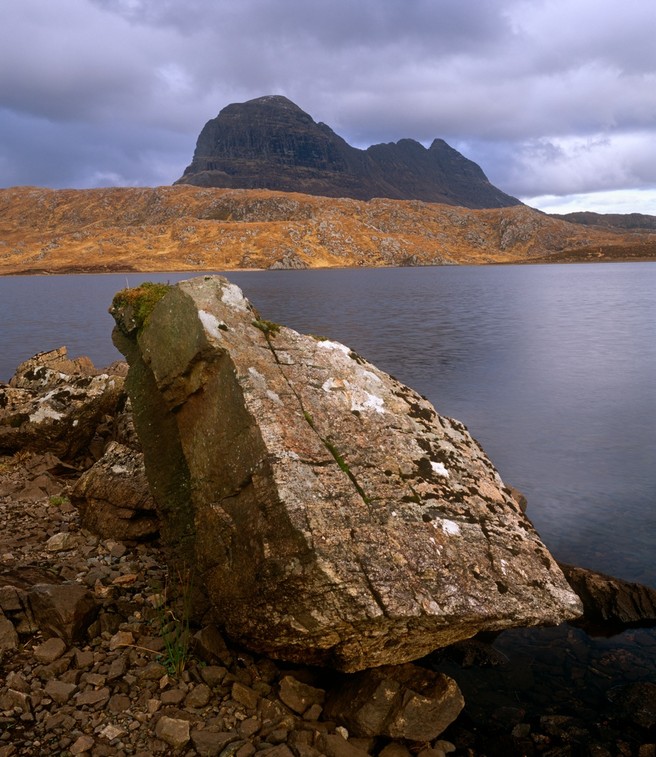 By way of background it is worth considering aspects of wilderness and how it has affected some of our predecessors. For that we need to go to America because that is where wilderness has had the greatest effect on photographers and artists. Ansel Adams, Edward and Brett Weston, Eliot Porter are some examples. This article will mainly use the Ansel Adams experience, as he was such a prolific writer.
By way of background it is worth considering aspects of wilderness and how it has affected some of our predecessors. For that we need to go to America because that is where wilderness has had the greatest effect on photographers and artists. Ansel Adams, Edward and Brett Weston, Eliot Porter are some examples. This article will mainly use the Ansel Adams experience, as he was such a prolific writer.
The US Congressional Wilderness Act of 1964 defined wilderness as follows: “ A wilderness, in contrast with those areas where man and his works dominate the landscape, is hereby recognized as an area where the earth and its community of life are untrammeled by man, where man himself is a visitor who does not remain.”
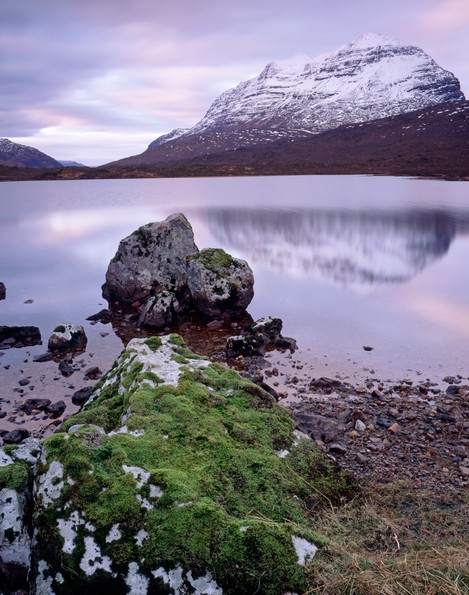 I don’t know of any other government in the world that has tried to define wilderness, but the US Congress in 1964 did a pretty good job. Wilderness is an essential part of the history of the American west and the psyche of its people as noted by the environmentalist, Wallace Stegner, writing “Something will have gone out of us as a people if we ever let the remaining wilderness be destroyed.” He believed that there was something deep in the human psyche that needed wilderness, even if it was just to look at from a distance. Americans would have admired the grand vistas in the paintings of Frederick Edwin Church and Thomas Moran, because such art was representative of a new and evolving country.
I don’t know of any other government in the world that has tried to define wilderness, but the US Congress in 1964 did a pretty good job. Wilderness is an essential part of the history of the American west and the psyche of its people as noted by the environmentalist, Wallace Stegner, writing “Something will have gone out of us as a people if we ever let the remaining wilderness be destroyed.” He believed that there was something deep in the human psyche that needed wilderness, even if it was just to look at from a distance. Americans would have admired the grand vistas in the paintings of Frederick Edwin Church and Thomas Moran, because such art was representative of a new and evolving country.
If it was not for John Muir and latterly Ansel Adams with his well documented photographs of the American west, the Wilderness Act may never have been passed. It was Ansel Adams’ admiration for John Muir and his love of the great outdoors that inspired him to go to Yosemite and other parts of the Sierra Nevada. Paintings by Albert Bierstadt and the photography of Carleton Watkins would have encouraged him. But it was John Muir’s writings about his lengthy travels that motivated him to plan and execute major expeditions into Yosemite with large format gear;10 x 8 kit no less, plus plates and heavy tripods. These trips often lasted up to a month with the equipment, food and camping gear being carried by mules. The preparation and planning would have been a task in itself.
So why did he do it? Because it was there? Or was there something else? Based on my own photographic experience the answer may lie in the mystical attractions of being in the wilderness. Yosemite was a world that was as pristine as you could get it. Working alone in such an environment does things to you. You become more alert to the surroundings. The slightest noise will disturb your sleep. The slightest change in light and cloud cover might be a warning signal. This, I believe is part of our human psyche – we are going back to our evolutionary roots.
The whole business of planning for a trip into the wilderness is mentally stimulating: maps, compasses, GPS, books and all the paraphernalia of camping before you even start on the camera equipment. We plan for difficulties and problems along the way, mindful of Ansel’s other comment that ‘the real wilderness is a hell of a place’. Christopher McCandless, an itinerant traveller and subject of Jon Krakauer’s book Into the Wild, was found dead some four months after entering Denali National Park. Even Edward Weston came across a dead body in the Colorado Desert - which he photographed. The thought of being out in the wilds sits inside us as part of our psyche, taking us back to our forebears.
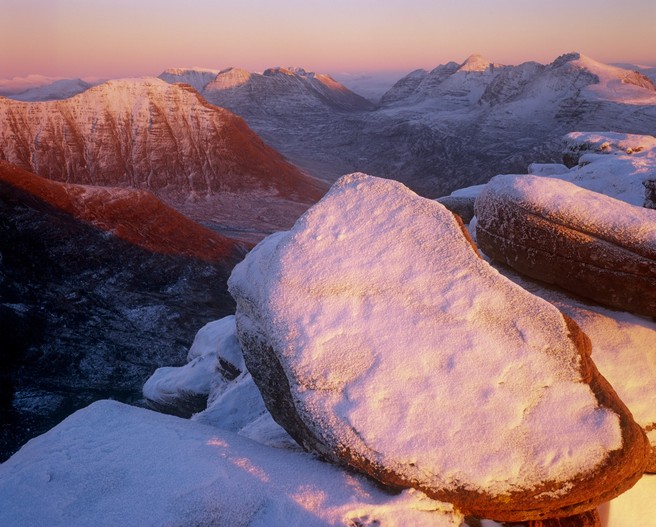 There are other mental aspects of wilderness that affect us. The feeling of space and solitude that are worth the pain of a long trek. We become tuned into the landscape; touching rocks, drinking pure water, scanning the skyline and hearing mysterious sounds. For Adams to photograph in Yosemite was ‘to enquire of my own soul just what the primeval scene really signifies”.
There are other mental aspects of wilderness that affect us. The feeling of space and solitude that are worth the pain of a long trek. We become tuned into the landscape; touching rocks, drinking pure water, scanning the skyline and hearing mysterious sounds. For Adams to photograph in Yosemite was ‘to enquire of my own soul just what the primeval scene really signifies”.
He went on to write to the director of the National Park Service in 1952 that “ Half dome is just a piece of rock…There is some deep personal distillation of spirit and concept which moulds these earthly facts into some transcendental emotional spiritual experience”. The one time occupants of Yosemite, the Ahwahneechee Indians would have had the same feelings, with one essential difference – they actually lived there. They too had a deep reverence and respect for the land that they occupied and may well have worshipped half dome for all we know. But their voices were lost in the growing nation that largely excluded them.
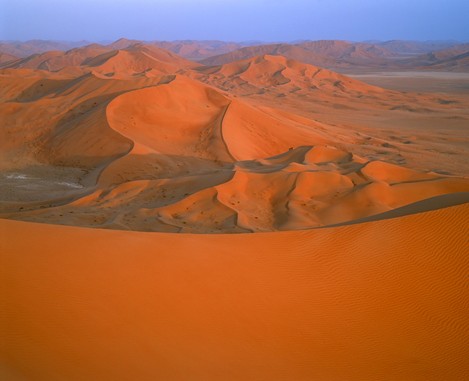 The fact that Ansel was not simply passing through these mountains and forests must have made a difference. He was a photographer with large format kit. To get those descriptive feelings means spending time in an area. You have to live, eat, and breath it to get the photograph you are after. Or it means returning again and again until you do. Large Format photography demands a certain kind of photographic discipline. Rather than making many pictures knowing a couple will pass muster – it is a few done to perfection. Frame, reframe, focus, refocus, adjust tripod, check edges, check composition, and re-check. Does it feel good? Yes – trip the shutter or no… and wait.. and wait..and wait…..
The fact that Ansel was not simply passing through these mountains and forests must have made a difference. He was a photographer with large format kit. To get those descriptive feelings means spending time in an area. You have to live, eat, and breath it to get the photograph you are after. Or it means returning again and again until you do. Large Format photography demands a certain kind of photographic discipline. Rather than making many pictures knowing a couple will pass muster – it is a few done to perfection. Frame, reframe, focus, refocus, adjust tripod, check edges, check composition, and re-check. Does it feel good? Yes – trip the shutter or no… and wait.. and wait..and wait…..
Ansel made thousands of photographs in the Sierra Nevada but is remembered for a small percentage of them which sell year in year out. To achieve that, something in his personality must be apparent in those photographs. He must have reacted to that transcendental feeling which drove him on in his search. That, I think is where beauty comes in. A natural beauty or even a terrible beauty evokes ideas of wilderness from a different world to that which we are used to. Such impressions sit inside the photographer for a long time.
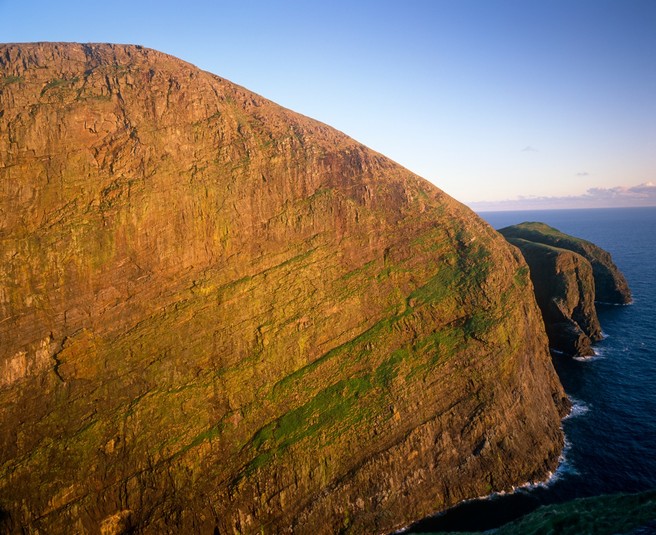 In winter 2010 I made yet another foray into the depths of Torridon in Northern Scotland. An extract from my notes read as follows: “Majesty of Rhuadh-stac Mor, Sail Mor. Pinnacle peaks that stand out. Triple Buttress a bit far away. The wild slopes descending into the glen – the light. An amazing evening – one of the best ever - light and sunset. All mountains illuminated, particularly the tops – even isolated rocks on their faces stand out as little illuminations, not balls of fire but illuminated patches of gravel and rock. Glistening snow – the light getting warmer and warmer until glowing over the mountains. The moment of excitement – the moment when watching the landscape you gasp at the sheer unbelievability of what you are witnessing – the display of light. I try to think about the photograph but it is hard, so many distractions. The real wilderness feeling is here, isolation, apprehension. The feeling of being totally alone, an insignificant part of the grandeur.”
In winter 2010 I made yet another foray into the depths of Torridon in Northern Scotland. An extract from my notes read as follows: “Majesty of Rhuadh-stac Mor, Sail Mor. Pinnacle peaks that stand out. Triple Buttress a bit far away. The wild slopes descending into the glen – the light. An amazing evening – one of the best ever - light and sunset. All mountains illuminated, particularly the tops – even isolated rocks on their faces stand out as little illuminations, not balls of fire but illuminated patches of gravel and rock. Glistening snow – the light getting warmer and warmer until glowing over the mountains. The moment of excitement – the moment when watching the landscape you gasp at the sheer unbelievability of what you are witnessing – the display of light. I try to think about the photograph but it is hard, so many distractions. The real wilderness feeling is here, isolation, apprehension. The feeling of being totally alone, an insignificant part of the grandeur.”
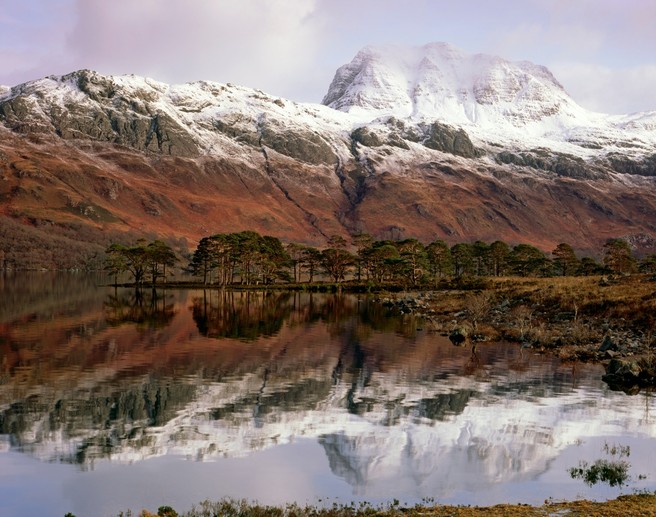 These notes reveal an intense encounter with nature – winter sunset over the Torridon mountains in line with what Ansel experienced time and again in Yosemite. I have had similar experiences in the desert of the Empty Quarter and on the deserted island of Mingulay in the Outer Hebrides, which like Yosemite, was once occupied. Those experiences and photographs remain in the photographer’s mind. The successes and the failures. Perhaps not so much the photograph itself but the experience, and that is why photographers are alive to their art and craft, always speaking animatedly of places they have visited.
These notes reveal an intense encounter with nature – winter sunset over the Torridon mountains in line with what Ansel experienced time and again in Yosemite. I have had similar experiences in the desert of the Empty Quarter and on the deserted island of Mingulay in the Outer Hebrides, which like Yosemite, was once occupied. Those experiences and photographs remain in the photographer’s mind. The successes and the failures. Perhaps not so much the photograph itself but the experience, and that is why photographers are alive to their art and craft, always speaking animatedly of places they have visited.
I believe beauty is seen and captured by the photographer. In my view nature is intrinsically beautiful but it has to be sought out. They then have to make decisions quickly about what to do when they find it. Immediate impulses can over ride a calm assessment of the photographic possibilities. Can nature be moody and emotional? Possibly. Mixed with other emotions (apprehension, aloneness, elation, tiredness, vulnerability) found in a wilderness location the photographer is almost high on a cocktail of internal feelings before even setting up the camera. Too many artists and writers have written that ‘nature speaks to them’ for me to believe that nature is not moody and emotional or just ‘is’. But one thing is for sure, the photographer has to come alive when nature is performing. Wilderness creates a real sense of awareness – it is not an illusion. Photographers see things that others do not. They have trained their minds and eyes to do that. Climbers climb, and will find a handhold where there isn’t one. The photographer is almost programmed to respond to what is seen and felt, but must be mentally agile in line with the Zen swordsman’s maxim “ expect nothing, prepare for everything”.

